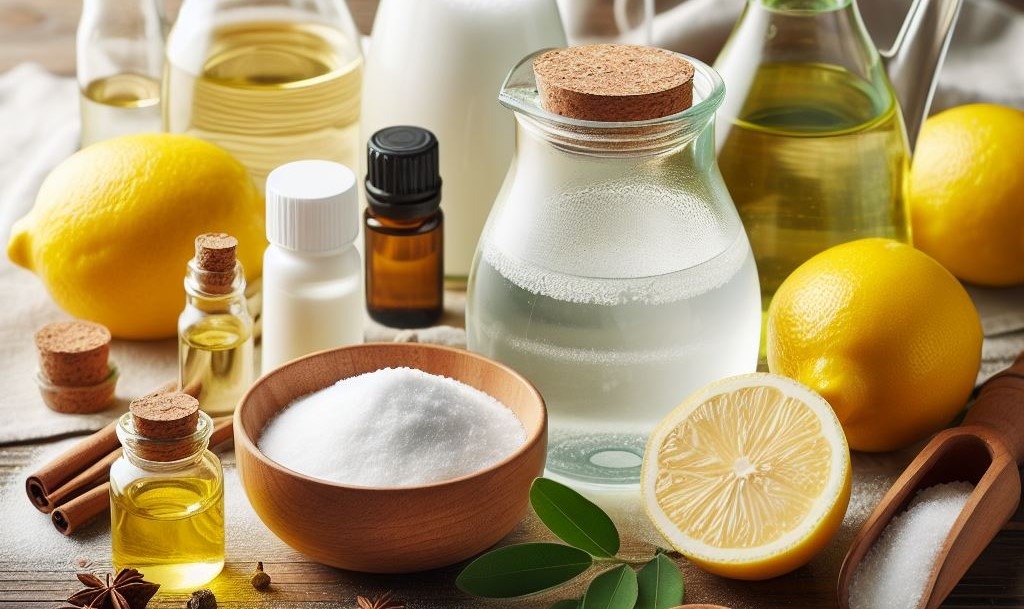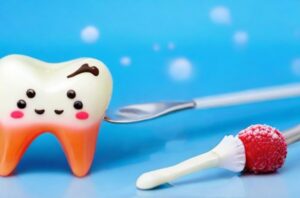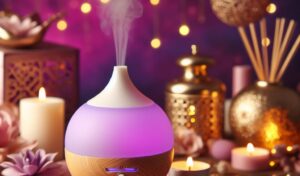You’ve probably grown up with the idea that bleach is the ultimate cleaning solution, capable of wiping out even the toughest stains and germs. But what if I told you there’s a better, safer way to clean your home? In this blog post, we’re going to explore 17 natural bleach alternative for cleaning that are not only effective but also safer for you and the environment.
Why Choose Bleach Alternatives?
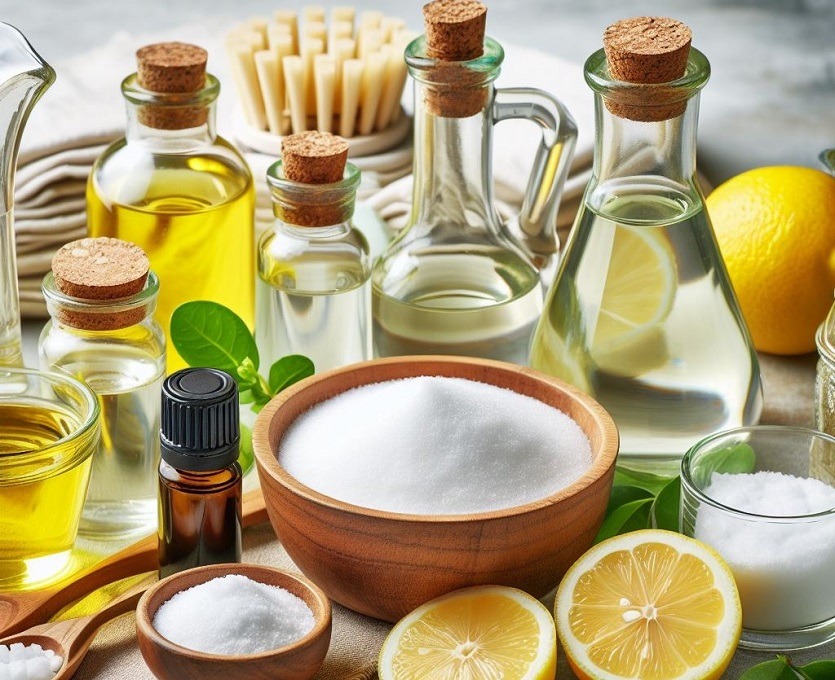
Traditional bleach contains harsh chemicals that can irritate your skin, eyes, and respiratory system. Not to mention, its toxic fumes can linger in your home long after you’ve finished cleaning.
With the increasing awareness of the harmful effects of chemical cleaners on our health and the environment, more and more people are turning to natural alternatives.
Long gone are the days of sacrificing our well-being for a spotless shine. It’s time to embrace a safer, more sustainable approach to cleaning.
17 Effective Bleach Alternative for Cleaning
We’re going to break free from the bleach mindset and explore 17 natural wonders that will revolutionize the way you clean your home.
1. Vinegar: The All-Purpose Wonder
This pantry staple is not only excellent for adding flavor to your salads but also doubles up as a powerful cleaning agent. Its high acidity makes it effective at dissolving grease, removing stains, and killing bacteria.
Simply mix equal parts vinegar and water in a spray bottle and use it to clean countertops, windows, and even stubborn mildew in the bathroom.
2. Baking Soda: The Odor Eliminator
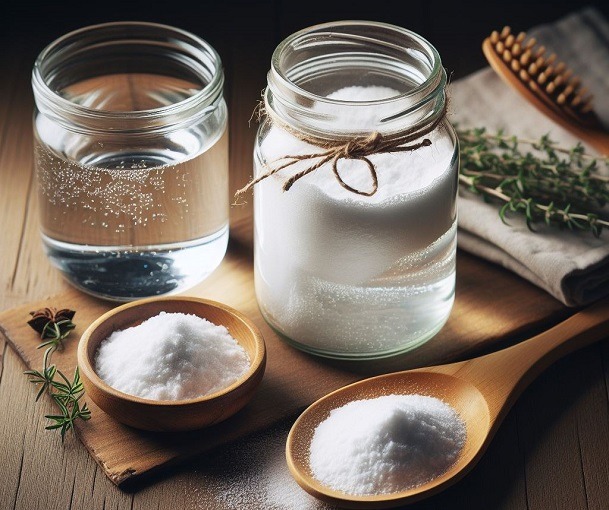
This humble ingredient is a powerhouse when it comes to neutralizing smells and scrubbing away dirt and grime. Sprinkle it on carpets before vacuuming to freshen them up, or create a paste with water to tackle tough stains on surfaces.
Baking soda also works wonders as a gentle abrasive for scrubbing sinks and tubs, leaving them sparkling clean.
Also read: Make Tooth Powder at Home
3. Hydrogen Peroxide: The Germ Fighter
This colorless liquid is highly effective at killing bacteria, viruses, and mold, making it a must-have for household cleaning. Simply pour it into a spray bottle and use it to disinfect kitchen surfaces, cutting boards, and bathroom fixtures.
Plus, unlike bleach, hydrogen peroxide breaks down into water and oxygen, leaving behind no harmful residues.
4. Lemon Juice: The Fresh Scented Cleaner
The natural acidity of lemon juice makes it effective at cutting through grease and grime, making it ideal for cleaning kitchen countertops, cutting boards, and stainless steel appliances.
Plus, its antibacterial properties help keep surfaces germ-free.
5. Tea Tree Oil: The Mold Buster
This essential oil is renowned for its antifungal properties, making it a potent weapon against stubborn mold growth.
Simply dilute a few drops of tea tree oil in water and spray it onto affected areas in your bathroom or kitchen. Let it sit for a few minutes before wiping away the mold with a damp cloth. Plus, the refreshing scent of tea tree oil will leave your home smelling clean and invigorating.
Also read: How much essential oil to add to a diffuser
6. Castile Soap: The Gentle Cleanser
Made from natural vegetable oils, this versatile soap is safe to use on a wide range of surfaces, including countertops, floors, and even delicate fabrics.
Its gentle formula removes dirt and grime without harsh chemicals, making it perfect for households with children or pets. Simply dilute it with water and use it as a multipurpose cleaner for all your cleaning needs.
7. Cornstarch: The Stain Remover
This kitchen staple is not just for thickening sauces; it also works wonders as a natural stain remover.
Simply sprinkle a generous amount of cornstarch onto the stained area, let it sit for a few hours to absorb the stain, then brush it away. For oily stains, mix cornstarch with a bit of dish soap to create a paste and apply it to the affected area before laundering as usual.
8. Salt: The Abrasive Cleaner
When it comes to tackling tough messes, salt is your secret weapon. Its gritty texture makes it ideal for scrubbing away grime and grease from surfaces like oven racks, pots, and pans.
Simply sprinkle salt onto the dirty surface, then use a sponge or scrub brush to work it into the grime. The abrasive action of the salt will help loosen stubborn residues, leaving your cookware looking like new.
9. Olive Oil: The Wood Polisher
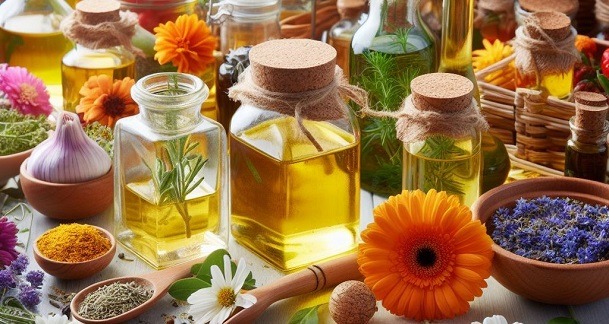
Keep your wooden furniture looking its best with a little help from olive oil. This kitchen staple not only adds shine to wood surfaces but also helps protect them from drying out and cracking.
Simply pour a small amount of olive oil onto a clean cloth and use it to buff wooden furniture, cutting boards, and utensils. The oil will penetrate the wood, nourishing it from within and leaving behind a beautiful, glossy finish.
Also read: Olive Oil Vs Rapeseed Oil
10. Club Soda: The Carpet Cleaner
This fizzy beverage is surprisingly effective at lifting stains and spills from carpet fibers. Simply pour club soda directly onto the stained area, then blot it with a clean cloth to absorb the liquid.
Repeat as necessary until the stain is gone. Plus, the carbonation in club soda helps to lift dirt and debris from the carpet, leaving it looking fresh and clean.
11. Citric Acid: The Scale Buster
This natural compound, found in citrus fruits like lemons and oranges, is highly effective at dissolving tough stains and restoring surfaces to their former glory.
Simply dissolve the citric acid powder in water and use it to clean sinks, faucets, and showerheads. Its acidic properties break down mineral deposits with ease, leaving behind a sparkling shine.
12. White Distilled Vinegar: The Glass Cleaner
Its acidic nature cuts through grease and grime, leaving surfaces shiny and spotless. Mix equal parts vinegar and water in a spray bottle, then spritz onto glass surfaces and wipe clean with a lint-free cloth.
The vinegar will dissolve dirt and residue, leaving behind a crystal-clear finish. Plus, its natural antibacterial properties help keep surfaces germ-free.
13. Olive Oil Soap: The Gentle Cleanser
Made from natural ingredients like olive oil and lye, this mild soap is gentle on skin and surfaces while still packing a powerful cleaning punch. Use it to wash dishes, clean countertops, and even spot-treat stains on clothing.
Its moisturizing properties leave hands feeling soft and hydrated, making it ideal for frequent use in the kitchen.
Also read: Olive Oil Infused with Garlic
14. Borax: The Laundry Booster
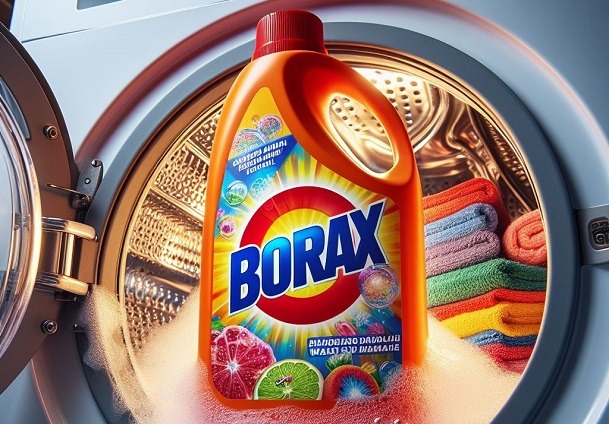
This naturally occurring mineral is highly effective at brightening whites, removing stains, and neutralizing odors.
Simply add a half cup of borax to your laundry detergent and wash as usual. Its alkaline properties help break down dirt and grease, leaving clothes looking and smelling fresh. Plus, it’s gentle enough to use on most fabrics without causing damage.
15. Soap Nuts: The Eco-Friendly Detergent
These dried berries contain natural saponins that produce a gentle foaming action when mixed with water, effectively cleaning clothes without the need for harsh chemicals. Simply place a few soap nuts in a cotton bag and toss it into the washing machine with your laundry.
They’ll release their cleaning power as they agitate in the water, leaving clothes clean and soft.
16. Witch Hazel: The Surface Sanitizer
This plant-derived extract has long been used for its antiseptic and anti-inflammatory properties, making it ideal for cleaning and disinfecting surfaces around the home.
Simply pour witch hazel onto a clean cloth and wipe down countertops, doorknobs, and other high-touch surfaces. Its mild yet effective formula kills germs without harsh chemicals, making it safe for use around pets and children.
17. Coconut Oil: The Stainless Steel Polisher
This natural oil is not only great for cooking but also doubles as a polishing agent for stainless steel surfaces.
Simply apply a small amount of coconut oil to a soft cloth and buff it onto stainless steel appliances in a circular motion. The oil will help remove fingerprints and smudges, leaving behind a brilliant shine. Plus, its natural antibacterial properties help keep surfaces clean and germ-free.
Also read: Get Egg Dye Off Hands (11 Powerful Ways)
A Bleach Alternative for Bathroom Cleaning
We’ll explore one such Bleach Alternative for Cleaning your bathroom without the need for harsh chemicals.
Introducing: Vinegar and Baking Soda
The ultimate cleaning power couple for your bathroom. Vinegar, with its acidic properties, is excellent for dissolving soap scum, hard water stains, and mineral deposits while baking soda acts as a gentle abrasive to scrub away grime and dirt.
Together, they form a natural and effective cleaning solution that will leave your bathroom surfaces gleaming.
How to Use Vinegar and Baking Soda for Bathroom Cleaning
Step-by-Step Guide
- Mixing the Solution: Start by mixing equal parts vinegar and water in a spray bottle. This will dilute the vinegar and make it safer to use, especially on delicate surfaces like marble or granite. In a separate container, create a paste by mixing baking soda with a small amount of water until a thick consistency is formed.
- Spraying and Soaking: Spray the vinegar solution onto the surfaces you wish to clean, such as countertops, sinks, and shower walls. Allow the vinegar to sit for a few minutes to penetrate and loosen dirt and grime. For extra stubborn stains, soak a cloth or sponge in the vinegar solution and lay it over the affected area for a more extended period.
- Scrubbing with Baking Soda: After allowing the vinegar to soak, apply the baking soda paste to areas with tough stains or built-up grime. Use a sponge or scrub brush to gently scrub the surface in a circular motion, allowing the baking soda to lift away dirt and debris. Focus on areas prone to mold and mildew, such as grout lines and shower curtains.
- Rinsing and Drying: Once you’ve scrubbed the surfaces thoroughly, rinse away the vinegar and baking soda residue with clean water. Use a microfiber cloth to wipe down surfaces and remove any remaining moisture. For a streak-free shine, finish by drying the surfaces with a clean, dry cloth.
Also read: DIY Fabric Refresher Spray (Uses+Tips)
A Bleach alternative for cleaning washing machine
We’ll explore a natural Bleach alternative for cleaning your washing machine and fresh without the need for bleach.
Introducing: White Distilled Vinegar
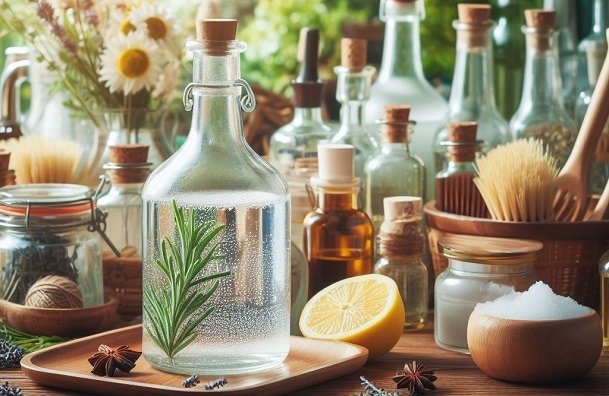
White distilled vinegar is the ultimate natural bleach alternative for cleaning your washing machine. Vinegar’s acidic properties make it an excellent cleaner and deodorizer, capable of removing mineral buildup, soap scum, and bacteria from your machine’s interior.
Plus, it’s safe to use on all types of washing machines, including top-loading and front-loading models.
How to Clean Your Washing Machine with Vinegar
Step-by-Step Guide
- Empty the Machine: Start by running an empty cycle on your washing machine using hot water. This will help to loosen any dirt, grime, and soap residue inside the machine.
- Add the Vinegar: Once the machine is filled with water, add two cups of white distilled vinegar to the detergent dispenser or directly into the drum. Vinegar’s acidic properties will help to dissolve mineral deposits and kill bacteria lurking inside the machine.
- Run a Cleaning Cycle: Close the washing machine lid or door and run a complete cleaning cycle using hot water. If your machine has a specific cleaning cycle option, select that setting. Otherwise, a regular hot water cycle will suffice.
- Wipe Down Surfaces: While the machine is running its cleaning cycle, take the opportunity to wipe down the exterior surfaces with a cloth dampened with vinegar. This will help to remove any dirt or grime that may have accumulated on the outside of the machine.
- Rinse Thoroughly: Once the cleaning cycle is complete, run an additional rinse cycle to ensure that all traces of vinegar are rinsed away. This will prevent any lingering vinegar smell on your clothes during future washes.
Tips for Effective and Safe Cleaning
Here are some tips for effective and natural Bleach alternative for cleaning.
1. Proper Dilution Ratios
When using natural cleaning alternatives like vinegar or hydrogen peroxide, it’s essential to dilute them properly to ensure effective cleaning without causing damage to surfaces. For vinegar, a 1:1 ratio of vinegar to water is generally sufficient for most cleaning tasks.
For hydrogen peroxide, a 3% solution is recommended for general cleaning purposes. Always read the labels and follow instructions carefully to avoid accidental damage or injury.
2. Test in a Small Area First
Before using any new cleaning solution on a large or visible area, it’s important to test it in a small, inconspicuous spot first to ensure compatibility and prevent damage.
This is especially important for surfaces like marble or granite, which can be sensitive to acidic cleaners like vinegar.
3. Ventilation is Key
Whether you’re using bleach or natural cleaning alternatives, proper ventilation is essential to protect your health and minimize exposure to harmful fumes. Open windows and doors to allow fresh air to circulate, and use fans to help disperse any lingering odors or vapors.
If possible, wear a mask or respirator to further reduce inhalation of fumes, especially when working in enclosed spaces.
4. Use Protective Gear
This may include gloves, goggles, and long-sleeved clothing to minimize contact with the skin. If you’re using particularly strong or caustic cleaners, consider wearing a mask or respirator to protect your respiratory system from harmful fumes.
5. Avoid Mixing Cleaning Products
Never mix different cleaning products, as this can result in dangerous chemical reactions and release toxic gases.
For example, mixing bleach with ammonia or vinegar can produce chlorine gas, which is highly toxic and can cause severe respiratory irritation or even death. Always use cleaning products separately and follow the manufacturer’s instructions carefully to ensure safety.
6. Rinse Thoroughly
After cleaning with any cleaning solution, be sure to rinse the surface thoroughly with clean water to remove any residue and prevent buildup.
This is especially important for surfaces that come into contact with food, as leftover cleaning product residue can contaminate food and pose a health risk.
7. Store Safely
Proper storage of cleaning products is essential to prevent accidents and ensure their effectiveness. Keep all cleaning products out of reach of children and pets, preferably in a locked cabinet or high shelf.
Store them in their original containers with tightly sealed lids, and away from heat sources or direct sunlight. Always label containers clearly to avoid confusion and accidental ingestion.
Will vinegar leave a strong smell on my clothes?
Not at all! While vinegar has a distinct smell, it dissipates quickly and won’t linger on your clothes after they’ve been washed. Running an additional rinse cycle after cleaning your machine with vinegar will ensure that any lingering scent is rinsed away.
How often should I clean my washing machine with vinegar?
It’s a good idea to clean your washing machine with vinegar once every 1-3 months, depending on how frequently you use it and the hardness of your water. Regular cleaning will help to prevent mineral buildup and keep your machine running smoothly.
Also read: How Can I Brush My Teeth After Wisdom Teeth Removal? Tips + Natural Care
The Hidden Dangers of Using Bleach on Health
We’ll delve into the downsides of using bleach and shed light on the potential risks it poses to your well-being. Because of these potential risks, you can choose a Bleach alternative for cleaning.
1. Respiratory Irritation
One of the most common side effects of exposure to bleach is respiratory irritation. When bleach is used in poorly ventilated areas or high concentrations, it can release toxic fumes known as chlorine gas.
Breathing in these fumes can irritate the respiratory tract, leading to symptoms such as coughing, wheezing, and shortness of breath.
Prolonged exposure to chlorine gas can also cause damage to the lining of the lungs and exacerbate conditions such as asthma and chronic obstructive pulmonary disease (COPD).
2. Skin Sensitivity
Bleach can also cause skin sensitivity and irritation upon contact. The harsh chemicals in bleach can strip the skin of its natural oils, leading to dryness, redness, and itching.
Prolonged or repeated exposure to bleach can even cause chemical burns and dermatitis, particularly in individuals with sensitive skin or pre-existing skin conditions.
To protect your skin, it’s essential to wear gloves when handling bleach and to rinse thoroughly with water if it comes into contact with your skin.
3. Eye Irritation
Bleach can be extremely irritating to the eyes, causing redness, tearing, and even temporary vision impairment upon contact.
Accidental splashes or fumes from bleach can lead to painful eye irritation and inflammation, which can be particularly dangerous if it occurs while performing tasks such as cleaning bathrooms or kitchens.
To protect your eyes from bleach exposure, always wear safety goggles or glasses when handling bleach, and rinse immediately with water if contact occurs.
4. Asthma Aggravation
For individuals with asthma or other respiratory conditions, exposure to bleach can exacerbate symptoms and trigger asthma attacks.
The strong odor and fumes emitted by bleach can irritate the airways, leading to coughing, wheezing, chest tightness, and difficulty breathing. Prolonged exposure to bleach has been linked to an increased risk of developing asthma or worsening existing asthma symptoms.
To minimize the risk of asthma aggravation, it’s best to avoid using bleach altogether and opt for safer, natural cleaning alternatives.
5. Environmental Pollution
In addition to its impact on human health, bleach also poses risks to the environment. When bleach is washed down drains or disposed of improperly, it can contaminate waterways and harm aquatic ecosystems.
6. Toxicity to Pets
Pets, particularly dogs and cats, are also vulnerable to the harmful effects of bleach.
Accidental ingestion or inhalation of bleach can cause gastrointestinal irritation, respiratory distress, and even poisoning in pets. Symptoms of bleach toxicity in pets may include vomiting, diarrhea, difficulty breathing, and seizures.
To protect your furry friends, it’s essential to store bleach securely out of their reach and to thoroughly rinse surfaces cleaned with bleach to remove any residue.
Conclusion
As we’ve explored in this blog post, there’s a wide array of bleach alternative for cleaning that are just as effective, if not more so, than bleach. From vinegar and baking soda to lemon juice and tea tree oil, nature provides us with everything we need to keep our homes sparkling clean without exposing ourselves or the environment to harmful toxins.
FAQs
Yes, vinegar is a versatile cleaning agent that can be used to clean a variety of household appliances, including dishwashers, coffee makers, and microwaves. Its natural acidity makes it effective at cutting through grease, grime, and mineral deposits.
While vinegar is safe to use on its own, it’s generally not recommended to mix it with other cleaning products, especially bleach. Mixing vinegar with bleach can produce toxic chlorine gas, which can be extremely harmful if inhaled. Stick to using vinegar on its own for safe and effective cleaning.
Use natural substitutes like white vinegar, hydrogen peroxide, or rubbing alcohol to disinfect surfaces instead of bleach. All you have to do is dilute them with water, apply them to the surface, and then wait a few minutes before cleaning them off. These substitutes eradicate bacteria efficiently without the abrasiveness of bleach.

